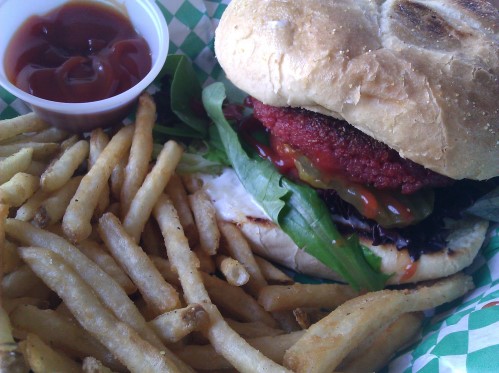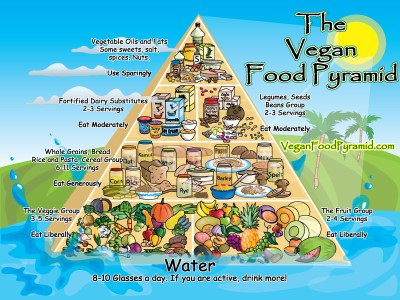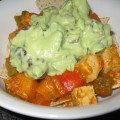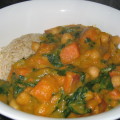
With two thirds of U.S. adults being considered overweight or obese, you better believe that many of those people are desperate to get their waistlines under control. Veganism is more than a diet obviously but many people consider going this route for the sole purpose of dropping the extra weight. They assume that by cutting out animal products the extra pounds will literally melt off with little to no effort. But does being a Vegan automatically mean that you’re either thin (or will be eventually) just by adhering to a plant-based diet? Definitely not. In fact, you could easily end up gaining weight unless you do your homework and apply some common sense principles that are true without regard to Veganism. Here we’ll look at some of the vegan weight-gain culprits, how to choose foods and quantities wisely and how to eat vegan in order to achieve a healthy weight as well as a healthy body.
“The Freshman 15”
Much like the new college student suddenly in charge of her own food choices with little experience, the majority of people who become Vegans go through a transitional phase where they don’t know how to replace plants with animals. When this is the case, knocking out animal-based foods oftentimes leads to one or both outcomes; they either don’t eat enough food and end up lacking in vital nutrients, vitamins and proteins OR they end up eating a lot of c processed vegan foods. The former will cause a shotty immune system but when both are present then we’re talking ill-health as well as weight gain. Not to mention confusion and disappointment. Here are some likely culprits:

- Vegan Junk Food: Candy corn is just as vegan as an apple but from a nutrient standpoint they are far from equal. The same goes for vegan baked goods, potato chips, deep-fried foods, etc. Vegan foods high in fat, sugar and calories are just as unhealthy as their animal counterparts so don’t be fooled into thinking something similar to the old-school “it’s fat-free so I can eat as much as I want” syndrome of the 90’s.
- Overcompensating with Bread and Pasta: This is especially troublesome in social situations in which you have little control over what’s being served or you just simply don’t know how to cook balanced vegan meals yet. There’s nothing inherently evil about eating carbohydrate-based foods (in fact we need them) but my point is that there’s more calories represented than you might think. For instance, a dinner roll could be roughly 200 calories and then adding a smear of Earth Balance adds 100 calories more. Then if you eat a cup or two of pasta with it that’s another 200-400 calories. That’s up to 700 calories and you’re not even close to getting all the nutrients you need yet.
- Nuts As A Primary Protein Source: Nuts are great for vegans and you should definitely eat them but not liberally. In other words, it might become a problem if you replace a cup of ground meat with a cup of ground up nuts (in tacos for instance) and then have lots nut butters and THEN whole nuts as your main snacks throughout the day.
- Faux Foods Rather Than Whole Foods: Switching out meat and dairy for vegan meat and dairy substitutes generally means that you’re still going to get foods high in fat and sodium and will certainly thwart your weight-loss efforts. These types of products should be eaten occasionally not regularly.
- Little Whole Fruit and Veggies But Lots of Juice : If you go vegan and yet you’re not eating fruits and veggies then you’re missing out big time. Not only are they a fantastic source of vitamins, minerals, fiber, phytochemicals and water but fruits (especially) contain a fair amount of protein in them while still low in calories. Juice, however, can become a problem if you drink too much of it. We’re talking a concentrated amount natural sugar and calories but without the water and fiber so it’s easy to overdo it.
The Vegan Food Pyramid
Joshua Wold is a vegan and an inspired artist who created this guide to help others see how to eat vegan in a balanced way. Personally, I love it and think it can help to get a better handle on how to lose the extra weight as a vegan. www.veganfoodpyramid.com
You’ll notice that the food groups starting at the bottom go from liberally to generously and then moderately to sparingly. This is great because it’s more in line with normal eating patterns and less about counting calories, which will make you crazy after awhile. Also, look at the serving sizes. The whole grains section for instance might seem a bit confusing since the serving suggestion is anywhere from 6 to 11. Basically, for weight loss go for the smaller number of servings when it comes to the top of the pyramid, dairy substitutes and whole grains while increasing(even doubling) the serving minimums for whole fruits and vegetables. Also, take notice of the water intake suggestion. Never underestimate the importance of drinking plenty of water throughout the day.
Vegan Overeating is Still Overeating
Simply put, weight loss success is achieved only when your choices reflect an overall decrease in calories going in and a corresponding increase in calories out. These choices are referring to food and drink as well as energy (calorie) expenditure. But the good news is that going vegan, if done in a healthful way, can help you achieve this goal and keep it off long-term.
Barone Gibbs and co-authors analyzed information on weight loss and associated factors collected on 481 overweight or obese postmenopausal women enrolled in the Women on the Move through Activity and Nutrition (WOMAN) Study at baseline, 6-, and 48-months follow up.
At 6 months, factors that were significantly associated with weight loss included decreased dessert, sugar-sweetened drink, and fried food consumption and less eating out at restaurants.
At 48 months, decreased dessert and sugar-sweetened drink consumption, but not reduced fried food consumption or eating out at restaurants, were associated with maintenance of/further weight loss. Decreased meat or cheese consumption and increased fruit and vegetable consumption were also associated with weight loss at 48, but not 6 months.
Beyond What the Scale Says
Eating is not an unemotional experience. There are so many factors that affect why, when, what and where we eat and drink and deciding to go without animal products doesn’t take into consideration other poor habits. Take some time and analyze what you’re eating. Three days worth of recording (with one day including a weekend) is usually enough to help you get a handle on your current intake and habits. A quick and dirty comparison with the Vegan Food Pyramid will also help you with this analysis and where you need to make changes. Or if you think you need more help then seek out a nutritionist of Dietitian that specializes in vegan food practices.
by Melissa Sanborn of Nutritional Brands, PureVegan
References
- How The Vegan Lifestyle Contributes to Weight Gain. http://www.fitsugar.com/How-Vegan-Lifestyle-Contributes-Weight-Gain-20077868.
- Myth: Going Vegan Will Make You Lose Weight. http://www.shape.com/weight-loss/weight-loss-strategies/11-nutrition-myths-can-cause-weight-gain.
- Top 10 Tips for Vegan Weight Loss. http://www.vegancoach.com/vegan-weight-loss-1.html
- Raw Vegan Food and Weight…Gain? http://joannasteven.blogspot.com/2012/01/raw-vegan-food-and-weight-gain-you-read.html
- Barnard, Neal D. A Two-Year Randomized Weight Loss Trial Comparing a Vegan Diet to a More Moderate Low-Fat Diet. Obesity: A Research Journal. http://www.nature.com/oby/journal/v15/n9/full/oby2007270a.html







1 Comment
Chia (324 comments)
November 8, 2012 at 11:46 amWow, a vegan food pyramid. Nice job!